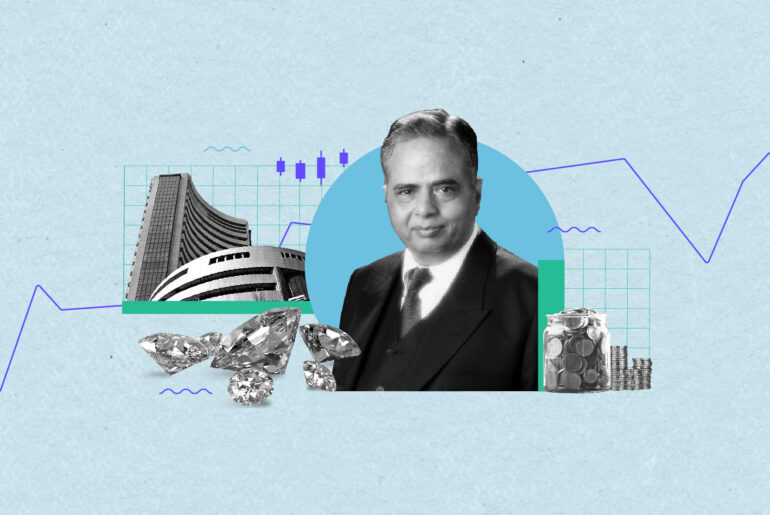Last Updated on Apr 6, 2021 by Manonmayi
Folks,
The announcement of the SBI Cards IPO has generated immense interest and anticipation among prospective investors like you. There’s a lot of research, reasoning, and evaluation that goes behind investing in an IPO. To help you in this ordeal, we have compiled important information about SBI Cards, the credit card issuing arm of SBI.
Before we get into the details, it is important to know that credit cards need not be issued by banks alone. Any entity including an NBFC can also issue credit cards, provided they are authorised to do so by the RBI. Similarly, SBI Cards is independent of SBI Bank—its parent company—and issues credit cards as well. Let us delve into the details now.
History of SBI Cards
Ever since its launch, SBI Cards has achieved various milestones. Here’s when the company came into being and how it evolved thereafter.
- SBI Cards was launched by the State Bank of India (SBI) and GE Capital in October 1998. It was incorporated as SBI Cards and Payment Services Private Limited (SBICPSPL)
- In December 2017, SBI and the Carlye Group acquired GE Capital’s stake in SBI Cards. Effective this, SBI held 74% stake and Carlyle held 26% stake in SBI Card
- SBICPSPL was converted from a Private Limited Company to Public Limited Company. Following this, the legal name of the entity was changed to SBI Cards and Payment Services Limited (SBICPSL) on 20th August 2019.
The role of Carlyle Group in SBI Cards
Carlyle Group is a Washington-based private equity (PE) firm, which invests in a company in its initial phases and exits by selling its stake at a later point. Speaking of Carlyle Group in the context of SBI Cards, the PE firm would be selling a 10% stake via the IPO. Reportedly, Carlyle’s stake sale could be India’s largest PE exit to happen via an IPO.
Products and services of SBI Cards
SBI Cards issues credit cards both in its individual capacity and in partnership with big brands. Following are some products of SBI Cards:
- Etihad Guest SBI Card for international travellers
- SME Card for Small and Medium Enterprises (SME) segment
- Co-branded credit card with Allahabad Bank for the bank’s customers
Why do people use a credit card as a payment mode?
A credit card is known for the various benefits that it offers. Some of them are listed below:
- It allows a ~30-45 days’ interest-free credit and boosts your purchasing power
- It helps you reduce the cost of purchases by offering No Cost EMI scheme
- It offers discounts, offers, and reward points that result in significant savings
How does the Indian credit card market look like?
Though the domestic credit card market comprises 74 players, it is mainly dominated by HDFC Bank, SBI Cards, ICICI Bank, and Axis Bank, the top 4 issuers of the industry. Combined, these 4 players claim 72% of the market share in terms of the number of credit cards issued and 66% in terms of spends. However, on looking further, you will find that despite a huge population, credit card penetration is not very great in India. These facts will give you get a clear idea:
- For every 100 people in the country, there are only 2.2 credit cards
- Assuming credit cards are mostly used by people in urban areas, there are only ~5 cr cards in the market for an urban population of ~45 cr
Surprising isn’t it? But the trend is undergoing a change now and for many reasons.
One of the greatest drivers of the demand for credit cards is the government. Policymakers have put in many efforts to make India a ‘cashless economy’. Along with RBI and other financial institutions, the government has taken various steps in this regard. As a result, you can see various developments such as innovative payment methods, the introduction of GST, and the launch of Unified Payments Interface (UPI) that are encouraging citizens to transact using a non-cash mode. These drivers of digital payments have resulted in better payments infrastructure. For instance, the number of POS terminals grew at a CAGR of 29% and was 3.7 million in 2019.
Besides, the growing e-commerce sector, access to affordable smartphones and data, and multiple payment apps featuring lucrative offers have also complemented the growth of digital payments such as a credit card in the country. These points only signal that the credit card market of India is largely untapped and offers immense business opportunities.
Where does SBI Cards stand in the market?
SBI Cards claims a market share of 18%, which makes it the second-largest issuer in the country after HDFC. By 30th Sep 2019, the entity had issued 9.46 million credit cards and expects to grow at 25% per year, as per the draft prospectus.
What is the revenue of SBI Cards?
Credit card issuers earn revenue from more than just one source of income, which is discussed below:
- Interest and non-interest income: A credit card issuer charges interest on a loan against credit card and/or part payment of the dues. This is interest income. On the other hand, non-interest income is a fee-based income such as late and annual fees that it charges to credit cardholders
- Merchant Discount Rate (MDR) or commission: a fee that a credit card issuer charges to the merchant/seller of a good/service for facilitating a credit card payment. In other words, when you purchase a good worth Rs 100, you swipe your credit card for the same amount. However, your credit card issuer retains a percentage of this amount as a facilitating fee and pays your merchant the balance amount
SBI Cards IPO and details
SBI Cards declared its plan of going public in the late 2019 and submitted the DRHP with SEBI to seek approval for the same on 27th Nov in the same year. While SBI Cards is expected to be valued between Rs 53,000cr and Rs 60,000cr, the entity has planned to offer an IPO worth ~Rs 9,500cr.
| Particulars | Particulars |
| IPO date | 2nd Mar 2020 to 5th Mar 2020 |
| Fresh issue | Rs 500 cr |
| Offer for sale | 13,00,00,000 equity shares |
| IPO price | Rs 750 to Rs 755 per share |
| Employee discount | Rs 75 |
| Market lot size | 19 shares |
Composition and purpose of SBI Cards IPO
The issuance of IPO will make SBI Cards the 5th SBI Group company to be listed. The IPO will have two components:
- Fresh equity of Rs 500cr: the net proceeds will be used for augmentation of the capital base to meet future capital requirements
- Offer for sale (OFS): where promoters will partially exit from the company
Further, through the IPO, SBI would divest 4%, while Carlyle would sell 10% of its stake in SBI Cards.
Categories of IPO subscription
Part of the SBI Cards IPO would have the following categories for subscription:
- Retail category where the public, as well as existing shareholders of SBI, can invest up to Rs 2 lakh
- Shareholder category where existing shareholders of SBI can invest up to Rs 2 lakh
- Employees category where an individual is both a shareholder and an employee of SBI can invest up to Rs 5 lakh
SBI Cards has a market share of 18% and boasts 9.4 million outstanding credit cards as of September 2019. In the draft prospectus, the credit card provider has mentioned that credit cards would increase at 25% per annum.
Lead managers of SBI Cards IPO
The expectedly largest IPO of the year would be managed by reputed parties such as:
- Axis Capital
- Bofa Securities
- HSBC
- Kotak Mahindra Capital
- SBI Capital Markets
- Nomura
Advantages for SBI Cards IPO
Experts and analysts are expecting SBI Cards IPO to be India’s biggest in 2020 and for the right reasons as follows:
SBI Cards has a strong Banca
Credit card issuers market their products via two channels mainly, Banca—existing bank customers—and the open market. Looking at SBI Cards Banca channel, the road ahead looks promising for the entity. Backed by a strong parent company such as SBI, the credit card issuing group has access to 430 million prospective customers spanning over 22,000 branches across the country.
SBI Cards has a high growth rate
Being the 2nd largest credit card issuer in the country, SBI Cards currently boasts a market share of 18%, which has the potential to increase further.
The Indian digital payment segment is growing fast
Quoting Fintech in India – Powering mobile payments, a report by KPMG, digital payments in the country are growing at 12.7% CAGR. Further, the number of locations that accept various modes of digital payment has grown from ~1.5 million in 2016-17 to 10 million, in a short span of 2-3 years. Such immense growth potential combined with innovative products offered by financial institutions, it looks like digital payments such as a credit card are here to stay.
India has a demographic advantage
Majority of Indian population is made up of youngsters, with the median age being 28.4 years. If employment scenes in the country become favourable, households could enjoy a higher disposable income and increase their consumption. This would also be a plus point for SBI Cards’ growth.
Lifestyle of people is changing
Unlike older times when households restricted their expenses to pay for basic needs, these days, they also spend on experiences, luxury, entertainment, dining, and travel.
Strong financials of SBI Cards
Now, coming to one of the most important factors to evaluate an IPO: financials of the company.
Here’s a table showing the growth of various sources of income of SBI Cards:
| Source of income | 2017 (Rs) | 2018 (Rs) | 2019 (Rs) |
| Interest income | 18,881.60 | 27,599.80 | 35,757.12 |
| Income from fees and services | 13,115.85 | 21,772.67 | 30,720.37 |
| Service charges | 533.39 | 796.13 | 1258.59 |
| Business development incentive income | 883.29 | 1,628.40 | 2,166.73 |
| Insurance commission income | 47.9 | 72.75 | 87.26 |
| Net gain on fair value charges | – | – | 1.04 |
| Total revenue from operations | 33,462.03 | 51,869.75 | 69,991.11 |
From the above table, you can see that SBI Cards’ revenue from all its sources has only increased and how! In addition to the excellent growth in income, SBI Cards also has lucrative numbers in terms of profit after tax (PAT).
Here’s a table showing the same:
| Particulars | 2017 (Rs) | 2018 (Rs) | 2019 (Rs) |
| Revenue from operations | 33,462.03 | 51,869.75 | 69,991.11 |
| Other income | 1,248.35 | 1,832.17 | 2,877.23 |
| Total income | 34,710.38 | 53,701.92 | 72,868.34 |
| Total expenses | 28,994.15 | 44,508.47 | 59,552.35 |
| Profit before tax | 5,716.23 | 9,193.45 | 13,315.99 |
| Tax | 1987.64 | 3182.02 | 4688.8 |
| Profit after tax | 3,728.59 | 6,011.43 | 8,627.19 |
In the above table, you can see that SBI Cards’ PAT has also headed north from the past 3 years.
To break it down further and give more perspective on SBI Cards PAT, here’s a comparison of the figures for the half-year ending Sep 2018 and Sep 2019.
From the above chart, you can see that SBI Cards’ PAT has grown tremendously at a whopping 93%!
Interesting facts about SBI Cards
- SBI Cards enjoy AAA and A1+ ratings by CRISIL and ICRA
- It acquired a customer base of 1 lakh within just 10 months of establishment
- It had entered the 1Million Card Club in 2002 in 2002
- It had achieved a 2 million card base in 2005
- Having ~9 million credit card customers, SBI Cards is India’s 2nd largest credit card issuer
Challenges to SBI Cards
The economic slowdown has a direct and severe impact on a credit card issuing company. Loss of jobs, resulting from a slowdown has translated into no or low income in the hands of households. This means that households would find it difficult to repay credit dues, ultimately impacting SBI Cards’ revenue.
Attractive financials and strong network give SBI Cards good bargaining power. Should the effect of the slowdown not be harsh on the company, investing in SBI Cards IPO would be a fruitful opportunity say, experts. We hope that these points, in addition to your own research, would help you make meaningful decisions.
- Things to Know About Mutual Fund NAV – Facts and FAQs - Dec 22, 2024
- Banking Mergers in India: List of Merged PSU Corporation Banks - Dec 12, 2024
- Public Sector Companies: Best PSU Stocks in India in 2024 - Dec 6, 2024




